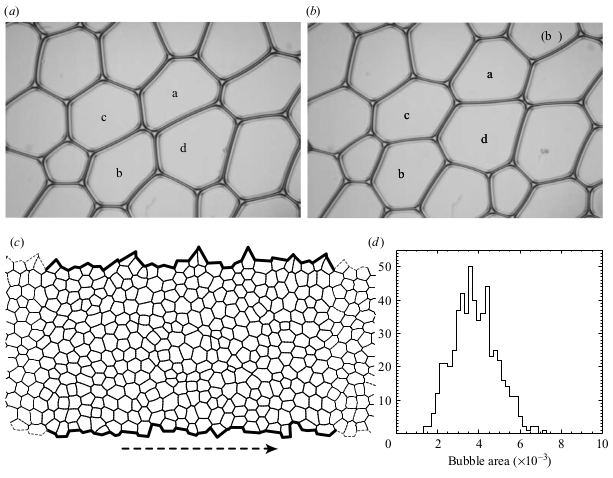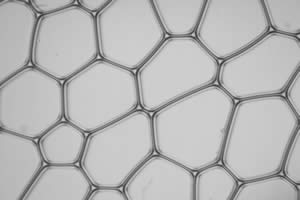
Citation
A. Kabla and G. Debregeas
Journal of Fluid Mechanics, 587:23-44 (2007)
Abstract
Abstract
A quasistatic simulation is used to study the mechanical response of a disordered, bidimensional aqueous foam submitted to an oscillating shear strain. The application of shear progressively extends the elastic domain, i.e. the strain range within which no plastic process occurs. It is associated with the development of an irreversible normal stress difference, and a decrease in the shear modulus, which both are signatures of the appearance of anisotropy in the film network. Beyond this mechanical measurement, the evolution of the structural properties of the foam is investigated. We focus in particular on the energy E0 defined as the minimum line-length energy under zero shear stress. For strain amplitude less than ~0.5, this quantity is found to decay with the number of applied cycles as a result of the curing of topological defects. However, for higher strain amplitude, plastic events appear to increase the structural disorder and tend to gather near the shearing walls. This process is a precursor of the shear-banding transition observed in fully developed flows, which will be studied in the companion paper.
Figure sample

(a, b) A T1 event observed in a confined two-dimensional foam (Debrégeas et al. 2001). This elementary plastic process involves a neighbour exchange between 4 bubbles indicated by the letters in the two pictures. (c) The numerical two-dimensional foam used in the present study. Shearing is obtained by incrementally moving the lower (rigid) boundary as indicated by the arrow. The foam is periodic along the shear direction. (d) Area distribution of the bubbles.


